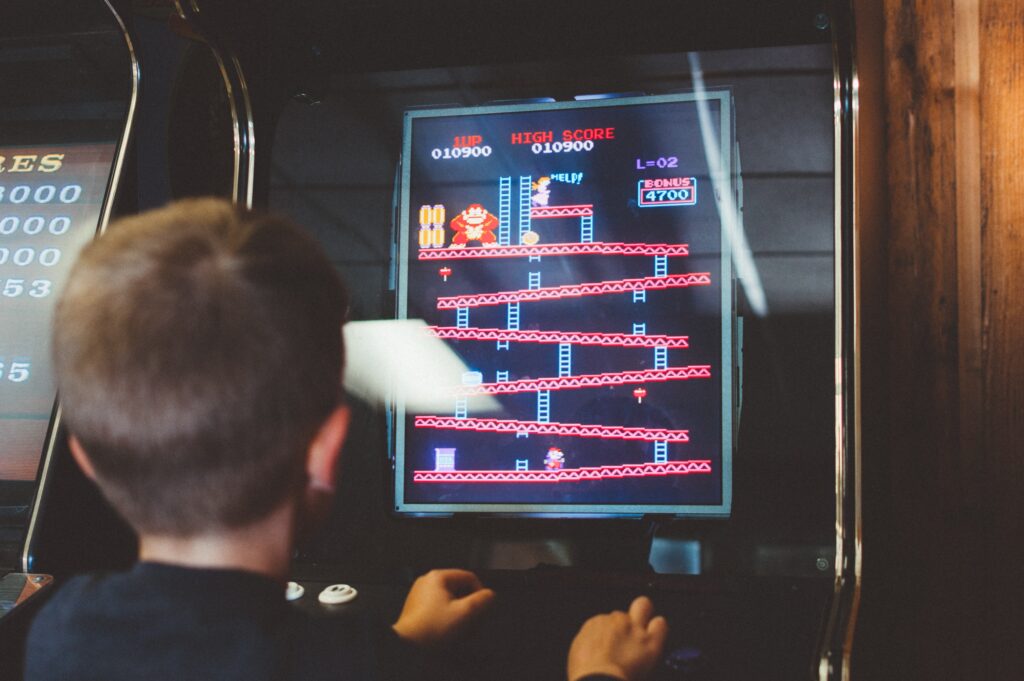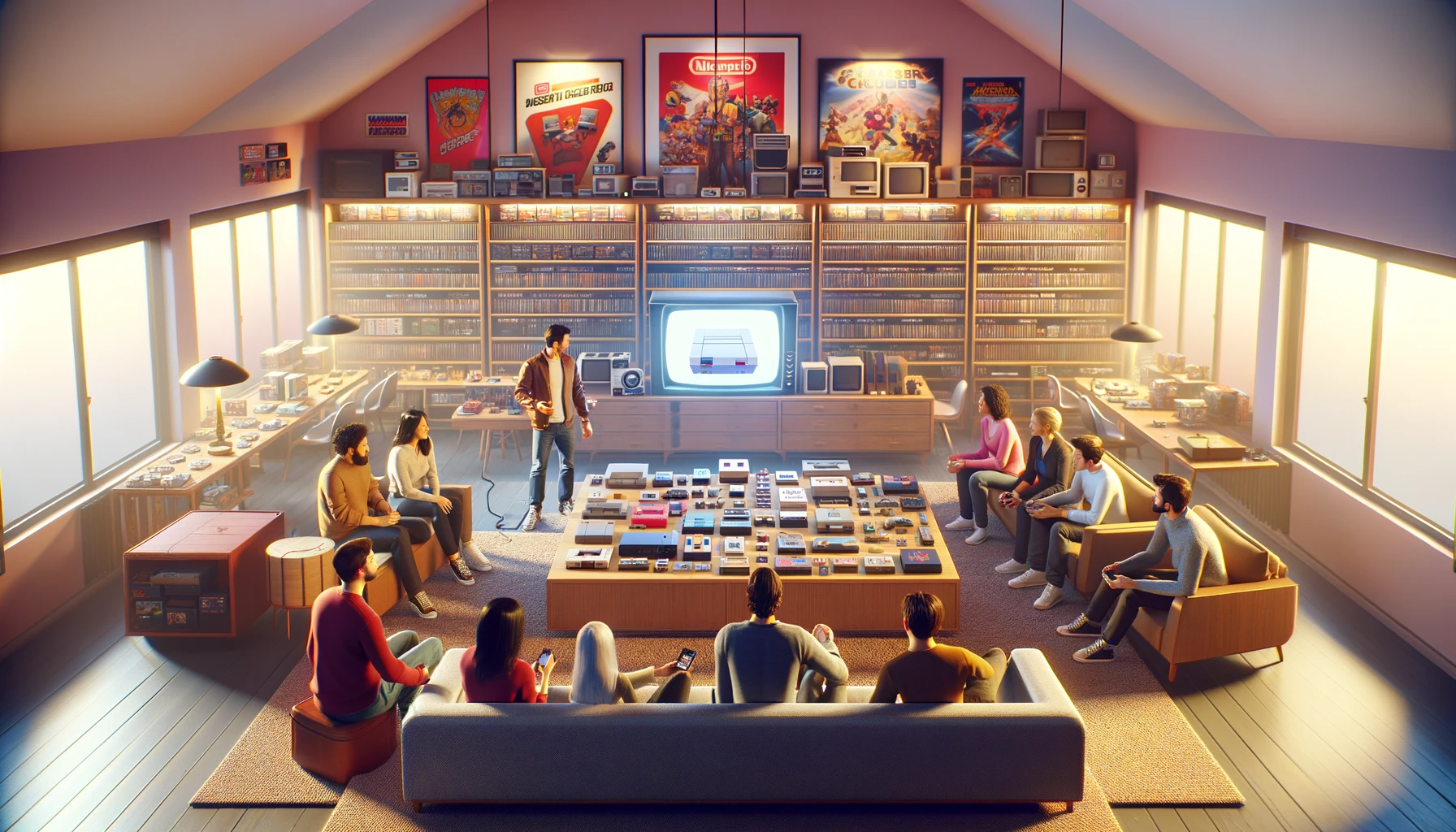Retro gaming has experienced a resurgence in popularity over the past few years, with many gamers embracing the classic titles that defined their childhoods. The phenomenon of retro gaming is widespread, encompassing not only video games but also consoles and gaming culture from decades past. But why is retro gaming so popular? This essay will delve into the key factors contributing to the appeal of retro gaming, from the nostalgia it evokes to its timeless game design and vibrant community.
Nostalgia Factor
One of the primary reasons behind the popularity of retro gaming is the strong sense of nostalgia it evokes. For many gamers, playing classic titles transports them back to their childhood, evoking memories of simpler times and cherished moments. This emotional attachment to early gaming experiences often prompts a desire to revisit the games that played a formative role in one’s life.
For example, someone who grew up playing “The Legend of Zelda: Ocarina of Time” on the Nintendo 64 might find great joy in revisiting the world of Hyrule, reminding them of their adventures with friends and siblings. Similarly, a gamer who spent countless hours mastering “Tetris” on the original Game Boy may relish the opportunity to reconnect with the game that first sparked their love for gaming. Nostalgia is a powerful force that can draw people to retro gaming, as it offers a chance to relive cherished memories and experiences.
Simplicity and Accessibility
Another appealing aspect of retro gaming is the simplicity and accessibility of the games themselves. Compared to modern games, which often feature complex mechanics, intricate narratives, and high-quality graphics, retro games are typically more straightforward and easy to pick up. This simplicity allows gamers to quickly immerse themselves in the gameplay without needing to invest significant time in learning intricate controls or systems.
Additionally, the rise of emulators and digital distribution platforms has made it easier than ever for gamers to access retro titles. With a few clicks, players can download and enjoy classic games from various consoles, removing the need for physical copies or outdated hardware. This ease of access has opened the doors for a new generation of gamers to discover and appreciate the charm of retro gaming.
Timeless Game Design
Retro games often boast timeless game design that continues to captivate and entertain gamers, regardless of their age or gaming preferences. These classic titles are built upon solid gameplay mechanics and engaging challenges that have stood the test of time.
Take, for instance, the enduring appeal of the “Super Mario Bros.” franchise. The simple yet addictive gameplay, combined with memorable characters and catchy music, has secured its place in gaming history. Many contemporary games, like the indie hit “Shovel Knight,” draw inspiration from these timeless designs, incorporating classic gameplay elements into modern titles.
This enduring appeal demonstrates that great game design transcends technological advancements, and it’s no surprise that gamers continue to flock to these classics for their engaging and satisfying experiences.
Community and Shared Experiences
The retro gaming community plays a significant role in the popularity of the hobby. Online forums, social media platforms, and conventions provide spaces for gamers to connect and share their love for classic games. These communities allow gamers to reminisce about their favorite titles, trade tips and strategies, and even form friendships based on their shared passion for retro gaming.
Events like speedrunning competitions and charity streams, where gamers race to complete games as quickly as possible or marathon classic titles for a cause, have further bolstered the appeal of retro gaming. These events showcase the enduring appeal of classic games and foster a sense of camaraderie among participants and viewers alike.
Collectibility and Preservation
For many gamers, the allure of retro gaming extends beyond the games themselves to include the physical aspects of the hobby. Collecting cartridges, consoles, and gaming merchandise has become a popular pastime, with collectors taking great pride in their carefully curated collections. These tangible artifacts serve as a connection to gaming history and offer a sense of nostalgia that digital downloads simply cannot replicate.
Moreover, the preservation of gaming history is an essential aspect of the retro gaming community. The efforts to maintain and archive classic games, hardware, and memorabilia help ensure that future generations can appreciate and learn from the rich heritage of the gaming industry. Museums, exhibitions, and documentaries have played a crucial role in promoting the importance of retro gaming and highlighting its cultural significance.
For instance, the National Videogame Museum in Frisco, Texas, offers visitors a chance to explore the history of video games, including hands-on exhibits featuring classic consoles and arcade machines. By preserving and showcasing these relics, the museum and others like it contribute to the ongoing popularity and appreciation of retro gaming.
Appeal to Modern Audiences Interested in Video Game History
Retro gaming holds a unique appeal for modern audiences who are interested in the history of the gaming industry. As the medium has evolved over the years, understanding and appreciating the origins of today’s gaming landscape has become increasingly important for enthusiasts and developers alike. There are several key reasons why retro gaming resonates with those who wish to delve into the rich heritage of video games.

Educational Value
For modern gamers who may not have experienced the early days of the gaming industry, retro games provide a valuable opportunity to learn about the roots of their favorite hobby. By exploring classic titles, players can gain insights into the evolution of gaming mechanics, storytelling, and technology. This historical perspective allows for a deeper appreciation of contemporary games and their influences.
For example, the iconic “Space Invaders” was a groundbreaking title in the late 1970s and laid the foundation for the shoot-‘em-up genre. By playing this classic arcade game, modern gamers can better understand the origins of popular contemporary titles such as “Geometry Wars” and “Enter the Gungeon.”
Appreciation of Artistic and Technical Achievements
Retro gaming offers modern audiences the chance to appreciate the artistic and technical achievements of game developers working with limited resources and hardware. The creative solutions and innovations born out of these constraints are an integral part of gaming history and continue to inspire contemporary game designers.
Consider the pixel art style popularized by 8-bit and 16-bit consoles. These iconic visuals have become synonymous with retro gaming, and their enduring appeal has led to a resurgence of the pixel art aesthetic in modern games like “Stardew Valley” and “Hyper Light Drifter.”
Diverse and Experimental Game Design
The early days of the gaming industry were marked by a spirit of experimentation and risk-taking, with developers exploring a wide range of gameplay styles and genres. This resulted in a diverse library of classic games, many of which still hold up today.
Modern audiences who delve into retro gaming can discover hidden gems and experimental titles that showcase the creativity and variety of the gaming industry’s formative years. From the unique puzzle-platformer “Lode Runner” to the groundbreaking open-world adventure “The Legend of Zelda,” these classic games provide a rich trove of gaming experiences for history enthusiasts to explore and enjoy.
